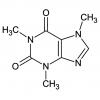Load-Line Calibration: why overclockers should care
-
Topics
-
0
-
0
-
5
-
throwaway60540 ·
Posted in Graphics Cards6 -
HelloFriend ·
Posted in Troubleshooting1 -
2
-
TurleyV16 ·
Posted in Troubleshooting3 -
Rumman ·
Posted in Troubleshooting3 -
poly ·
Posted in General Discussion4 -
9
-
-
play_circle_filled

Latest From Linus Tech Tips:
He Spent 3 YEARS Begging me for a PC. Good Luck Finding it!













Create an account or sign in to comment
You need to be a member in order to leave a comment
Create an account
Sign up for a new account in our community. It's easy!
Register a new accountSign in
Already have an account? Sign in here.
Sign In Now